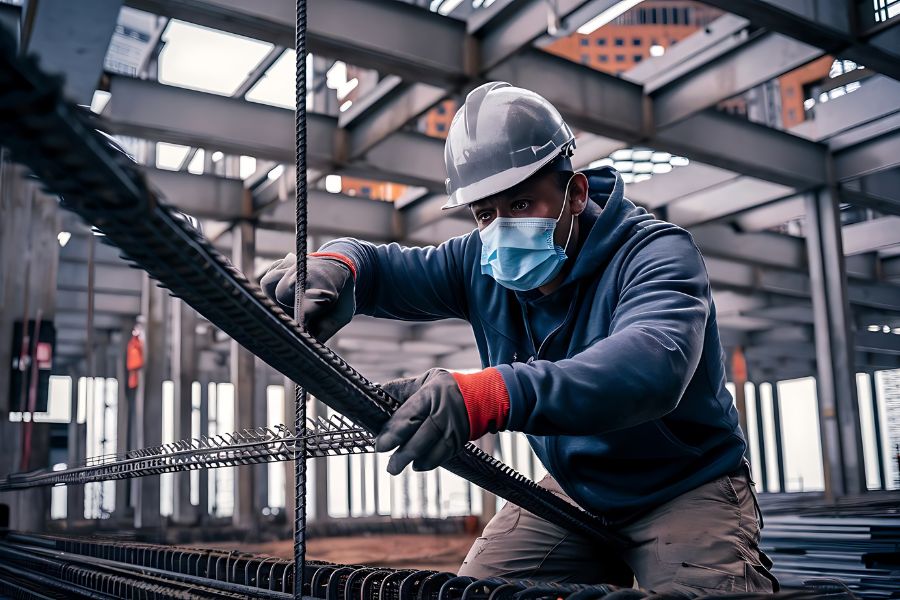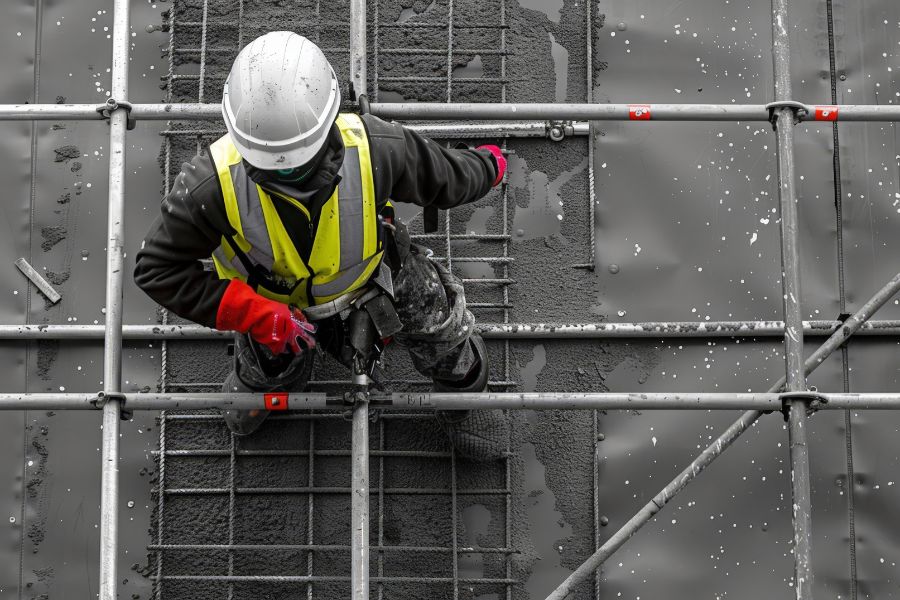How Does Cathodic Protection Work in Reinforced Concrete Structures?
Reinforced concrete is widely used in construction for its durability and strength. However, over time, it can be vulnerable to corrosion, particularly in environments with high moisture or chloride content. One of the most effective methods to prevent this is through cathodic protection in reinforced concrete. This technique extends the lifespan of structures by controlling the electrochemical process that causes corrosion.
What Is Cathodic Protection in Reinforced Concrete?
Cathodic protection (CP) is a method used to prevent corrosion by turning the steel reinforcement in concrete (the rebar) into the cathode of an electrochemical cell. It is particularly effective in environments where high levels of moisture and salts, such as chlorides from de-icing salts or marine environments, can lead to accelerated corrosion.
When concrete becomes contaminated with chloride ions or experiences carbonation, the passivation layer around the steel rebar is compromised, allowing corrosion to begin. Cathodic protection in reinforced concrete systems involves either using an external anode or an impressed current system to neutralize this corrosion process.
In this method, an electrical current is applied to the steel rebar, reversing the natural flow of ions and preventing oxidation—the key cause of corrosion. By doing so, the structural integrity of the concrete is maintained, even in harsh conditions.
Why Is Cathodic Protection Essential for Reinforced Concrete?
Reinforced concrete structures are commonly used in infrastructure projects like bridges, parking structures, and buildings. While concrete itself is strong, it doesn’t entirely protect the embedded steel reinforcement from corrosion. Over time, moisture, salts, and other chemicals penetrate the concrete, making the steel vulnerable to rust, which compromises the strength of the structure.
Cathodic protection in reinforced concrete plays a crucial role in extending the life of these structures, reducing repair costs, and ensuring the safety of the infrastructure. Without cathodic protection, the rebar would corrode, expand, and eventually crack the surrounding concrete, leading to costly repairs or, worse, structural failure.
Implementing cathodic protection not only halts the corrosion process but also enhances the durability of the structure. It is a proactive solution that provides long-term protection, particularly in environments where corrosion risk is high.
How Is Cathodic Protection Installed in Reinforced Concrete?
There are two main types of cathodic protection systems used in reinforced concrete: galvanic (sacrificial) anodes and impressed current systems (ICCP).
- Galvanic Anodes: In this system, a metal with a higher electrochemical potential than steel (such as zinc or aluminium) is embedded into the concrete. The anode corrodes in place of the steel, providing protection. Galvanic systems are passive, meaning they don’t require an external power source, and are generally easier to install. However, they may not provide as much protection in highly corrosive environments as impressed current systems.
- Impressed Current Cathodic Protection (ICCP): This system uses an external power source to provide a continuous electrical current. Anodes are embedded in the concrete and connected to the power supply, which delivers a constant protective current to the steel reinforcement. While more complex to install, ICCP systems are highly effective and can be used in environments with extreme corrosion risk.
The choice between these systems depends on the environment, the level of corrosion risk, and the specific requirements of the structure. Both systems can significantly reduce the rate of corrosion, but their effectiveness depends on proper installation and maintenance.
What Are the Key Benefits of Cathodic Protection in Reinforced Concrete?
There are several important benefits of using cathodic protection in reinforced concrete structures:
- Extended Service Life: One of the biggest advantages of cathodic protection is its ability to extend the life of reinforced concrete structures, often by decades. By preventing corrosion, the structural integrity of the concrete is maintained.
- Cost-Effective Maintenance: While the initial installation of cathodic protection systems may require an investment, the long-term benefits far outweigh the costs. The need for repairs and replacements is drastically reduced, leading to significant savings over the life of the structure.
- Enhanced Safety: By preventing corrosion in reinforced concrete, cathodic protection helps avoid the risk of structural failure, ensuring the safety of buildings, bridges, and other critical infrastructure.
- Sustainability: Reducing the need for frequent repairs and replacements makes cathodic protection an environmentally sustainable solution. It also reduces the environmental impact of extracting and producing new materials for repairs.
How Does CORCON Contribute to Cathodic Protection in Reinforced Concrete?
CORCON – The Institute of Corrosion has been a leader in corrosion prevention technologies. With its expertise in cathodic protection in reinforced concrete, CORCON offers specialized training and certification courses for industry professionals. These programs equip engineers, contractors, and inspectors with the knowledge to effectively implement and maintain cathodic protection systems.
As the demand for durable infrastructure grows, CORCON continues to provide cutting-edge solutions to tackle corrosion, ensuring the longevity and safety of critical assets. CORCON remains at the forefront of corrosion control technologies with ongoing research and advancements.
FAQs: Frequently Asked Questions
What is cathodic protection in reinforced concrete?
Cathodic protection prevents corrosion in steel reinforcement by applying an electrical current that halts the oxidation process, safeguarding the structure.
Why is cathodic protection necessary for reinforced concrete structures?
It protects embedded steel from corrosion, extending the structure's lifespan and reducing costly repairs in corrosive environments.
What are the two types of cathodic protection used in reinforced concrete?
The two types are galvanic anodes (sacrificial) and impressed current systems (ICCP), each offering corrosion control based on environmental factors.
How does cathodic protection extend the life of concrete structures?
By preventing the rebar from corroding, cathodic protection maintains the structural integrity of concrete, reducing the need for frequent repairs.
How does CORCON contribute to cathodic protection in concrete structures?
CORCON provides training and certifications on corrosion prevention, helping professionals effectively implement cathodic protection systems
Closing Insights
In summary, cathodic protection in reinforced concrete is an essential technique for maintaining the integrity and safety of structures exposed to corrosive environments. By preventing the oxidation of steel reinforcement, cathodic protection extends the life of reinforced concrete and minimizes costly repairs. Whether through galvanic anodes or impressed current systems, this technology is a proactive solution for corrosion control in concrete structures.
For professionals looking to deepen their understanding of cathodic protection, CORCON – Institute of Corrosion offers Cathodic Protection training programs and certifications that provide the knowledge and tools needed to implement these systems effectively. With over two decades of experience, CORCON is dedicated to advancing the field of corrosion prevention.
Image Reference: Freepik
Disclaimer: All trademarks, logos, and brand names are the property of their respective owners. All company, product, and service names used in this website are for identification purposes only. Use of these names, trademarks, and brands does not imply endorsement.


